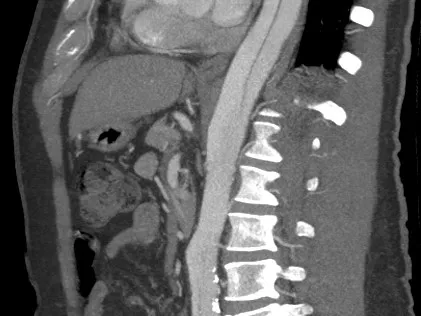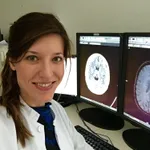
This module is created to provide guidance for radiologists who would like to gain confidence in identifying acute emergencies of the aorta and improve their reporting skills on the basis of a structured approach. Acute aortic syndrome belongs to the most fatal emergencies in the medical field and requires immediate diagnosis on CT scan which is the quickest and most reliable tool for assessment of the aortic pathology and urgent differential diagnosis. The radiologist’s role is not only to detect or rule out the acute pathology, but also to provide the clinicians with the most important details and identify risk factors and associated complications which have an impact on the immediate and targeted further management of the high-risk patients.
The training contains 5 anonymised real-life cases from everyday reporting in the TMC on-call section.
This is a CME-accredited activity by TMC Academy, an EACCME Trusted Provider.
Testimonials:
"The simulator is a brilliant way to learn or relearn how to approach a certain examination. It gives you the opportunity to practice, think logically through a case, and is very applicable to clinical work.”
Dr. Bryan Connolly, Specialist Radiologist, Unilabs Sweden (2021)
"I like everything and particularly the structured template which creates an algorithm of reporting”
User (2020)
"I like that I can learn from real, whole cases.”
User (2020)
"Hands-on training with feedback!”
User (2020)
"I really liked the variety of cases and way of reporting.”
User (2019)
"It's great learning from your own mistakes. Liked the subtle pathologies and instant feedback.”
User (2019)
How does it work?
The specialised radiologist mentor has carefully prepared a structured reporting template to help you report the cases, formatted in a fun clickable quiz format while you also view the cases in an web-based PACS-viewer on the right.
1. First, you should review the case images.
2. Then, you can begin the reporting template quiz (meanwhile still reviewing the images on the right)
3. After you submit your answers, the correct answers will appear and you will receive a score for your report.
4. Alongside the answers, you will also find helpful comments and learnings that the specialised radiologist mentor has left. There might also be arrows or markings on the images to help you see relevant findings.
5. If you score more than 66%, you have passed the module and can download your CME Certificate. If you did not pass, you can reset the module and try again.
You can save the module whenever you want and come back to it later, giving you flexibility to practice on your own time.
If this is your first Image Reporting Simulator module, don't miss the introductory video to the right!
Don't miss our FAQ page for any questions you encounter along the way - or email us directly with your questions.
Did you know?
With a TMC Academy Subscription Plan you have access to all reporting modules in our simulator, from every topic.
- Detect and interpret the most relevant acute pathologies of the aorta
- Develop a structured approach in reporting the most important imaging features
- Be able to prioritise clinically relevant aspects in the acute emergency setting
- Become aware of high-risk conditions and associated complications
| Hardware | Tablets * | Minimum | Recommended |
|---|---|---|---|
| Memory (RAM): | 2 Gigabyte | 8 Gigabyte | 16 Gigabyte |
| Processor (CPU): | Dual core 1.85 Ghz | Dual core 2 Ghz | Quad core 2.5 Ghz |
| Internet connection | Minimum | Recommended | |
| Speed: | 10 Mbps | 25 Mbps | |
| Software | Tablets | Desktop | |
| Browser: | Safari * | Chrome ** | |
- * Tested with Safari on iPad 9.7 (2017), should also work on Android with Chrome. User interface not optimized for smaller screens. Large cases (more than 600 images) are not able to be opened on tablet or mobile devices due to memory consTableRowaints.
- ** Firefox, Edge and Safari also work but might not provide an equally smooth experience. Internet Explorer is not supported.





